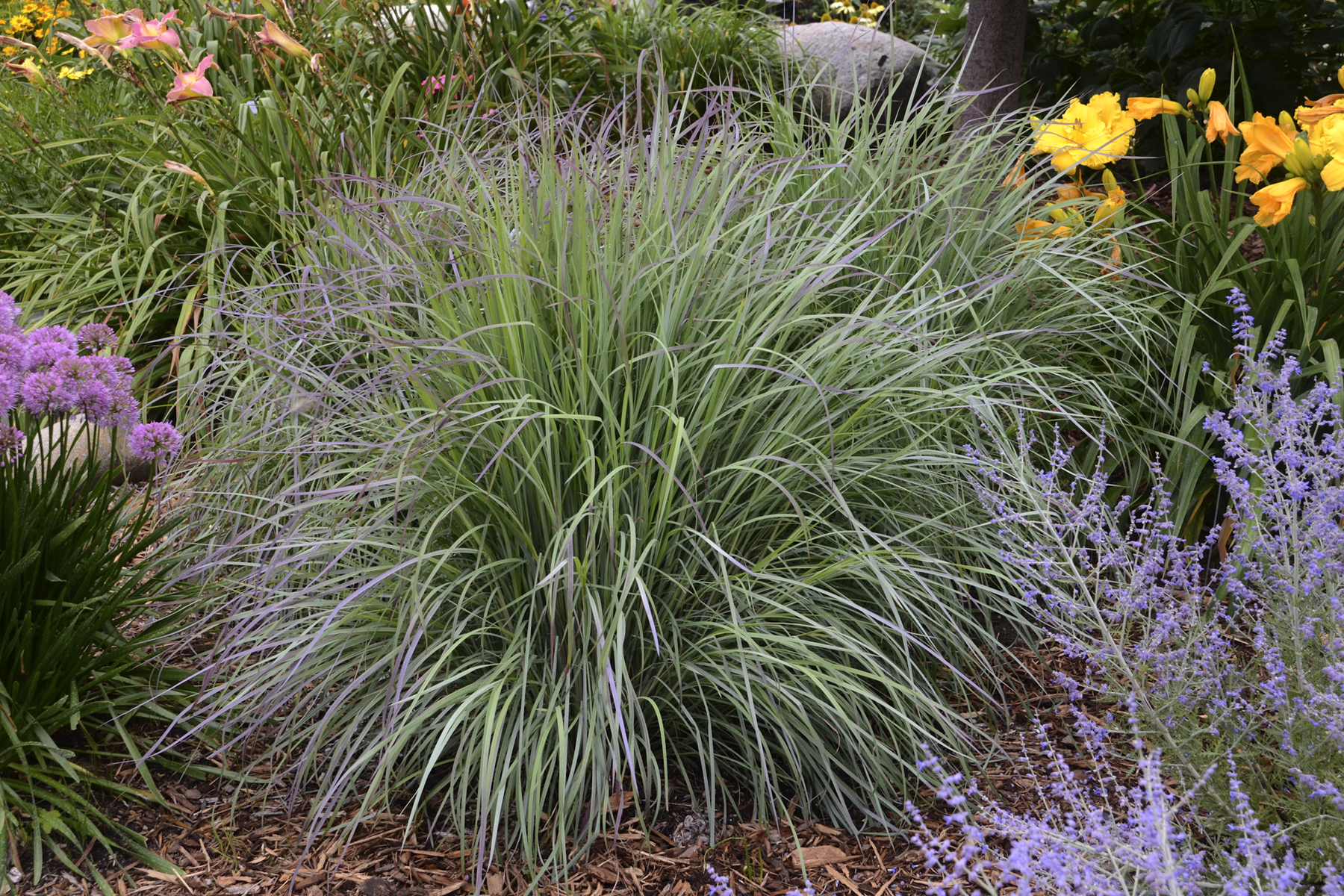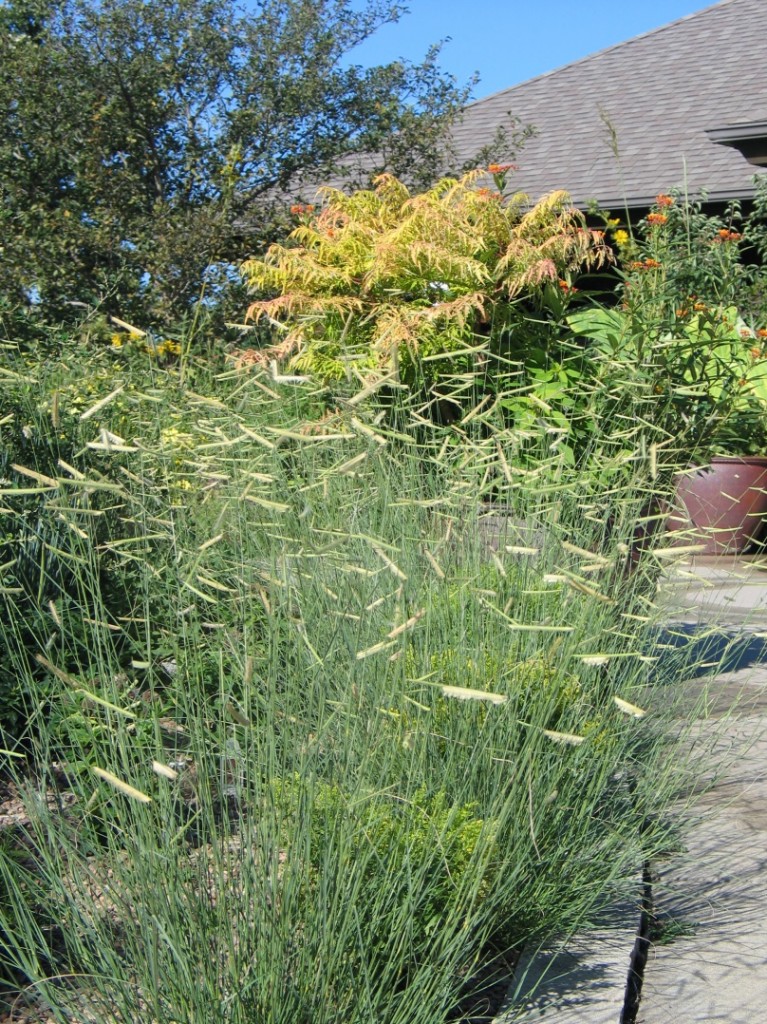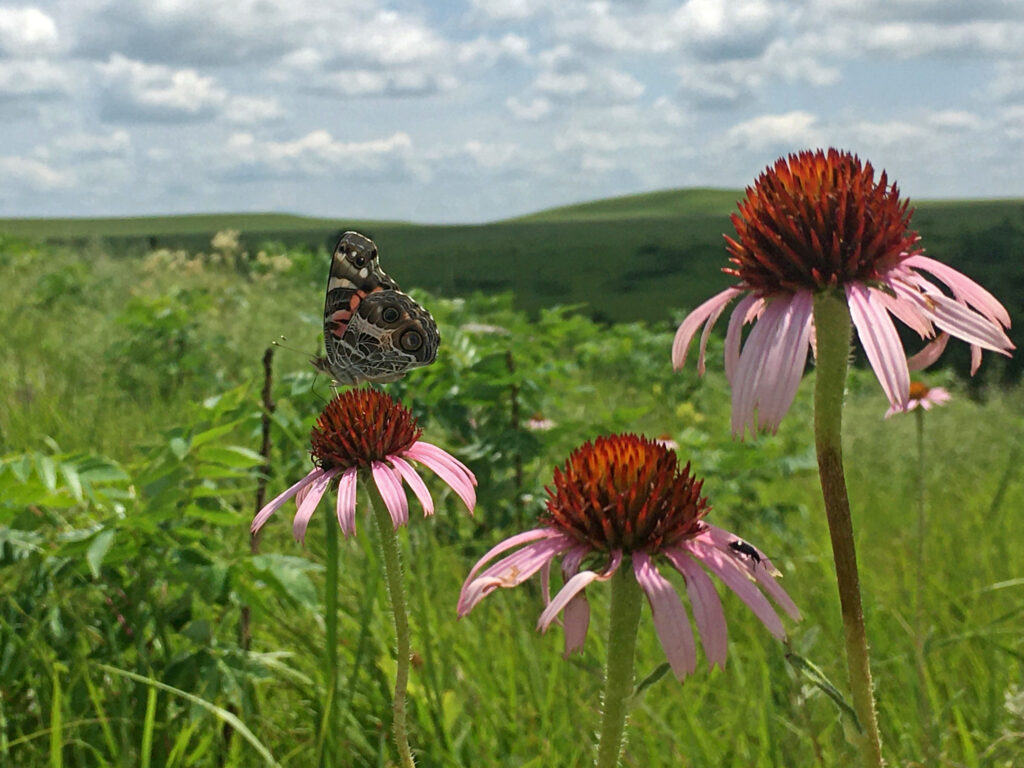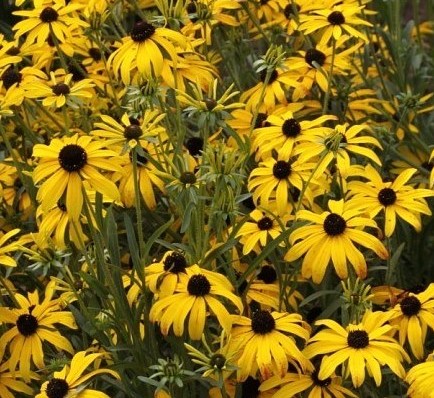A couple weeks ago, we laid the ground work for enhancing the food web by listing some of the keystone species gardeners should include in their landscapes. When choosing plants to support insects, the foundation of the food web in our gardens, we want to make the most of our space.
Insects are typically not picky when it comes to food sources, but they do have their preferences. Here is an extension of that original list to give you more options to diversify your plantings and support a more robust food web in your habitat garden.
Grasses
Little Bluestem (Schizachyrium scoparium)
This native bunchgrass can be found throughout the Great Plains. It reaches two to three feet tall and prefers a medium to dry well-drained soil. Give it plenty of sunlight for best growth. It is the larval host for many species of butterflies including Ottoe Skipper, Crossline Skipper, Dusted Skipper, and Cobweb Skipper.
‘Twilight Zone’ is a nice cultivar with purple green foliage during the growing season and good fall color.

Blue Grama (Bouteloua gracilis)
Blue grama forms dense clumps and is extremely drought tolerant. Use in a sunny spot as a ground cover or mix with buffalograss for an easy-care lawn substitute. The flowers look like tannish eyelashes that are attractive well into winter. There are over 10 butterfly larvae that feed on blue grama, including many skippers, Ottoe, Leonards, and Uncas; but also Mead’s wood nymph and the garita skipperling.
My favorite cultivar of blue grama is ‘Blonde Ambition’. Several birds have been noted feeding on blue grama seed, including grassland sparrows, wrens and wild turkeys.

Wildflowers
Beardtongue (Penstemon sp.)
To see huge bumble bees crawling into these tubular flowers in the spring is fun to watch. The longer lower lip of the flower makes a perfect landing pad. Many of the species have distinct lines leading to the back of the flower known as nectar guides. These lines act like runway lights, leading pollinators to the back of the flower where the nectar is located.
Penstemons are a diverse species, but some of our native Kansas species like Penstemon cobaea, Penstemon grandiflorus, Penstemon tubaeflorus and Penstemon digitalis put on quite a show in the spring. My favorite penstemon variety is ‘Dark Towers’.
Black-eyed Susan (Rudbeckia sp.)
Black-eyed Susan is one of the most recognizable summer-blooming wildflowers. Its bright yellow flowers explode in the summer and are covered with all sorts of pollinator activity. Bees, flies, butterflies, and beetles feed on their nectar and pollen. The fruiting heads also provide seed for birds over the winter.
Missouri blackeyed susan and Rudbeckia ‘American Gold Rush’ are garden worthy perennials.
Coneflower (Echinacea sp.)
There are so many choices when it comes to coneflowers. Oranges, yellows, reds, greens, pinks and every shade imaginable. The options are endless, but I always try to include some of the true native coneflowers in my designs. Echinacea angustifolia, Echinacea pallida, Echinacea paradoxa and Echinacea purpurea are all pollinator magnets. Be sure to avoid any coneflowers with double blooms. They may look cool, but they do nothing for pollinators, because they either don’t produce nectar or pollen or, because of their double-decker nature, don’t allow bees access to it.
Native bees (bumble bees, sweat, mining and sunflower bees) along with honey bees and butterflies (monarchs, swallowtails, sulfurs, fritillaries and many others) glom onto these summer blooming (May-August) perennials. Coneflowers can be quite adaptable, but most appreciate at least 6 hours of direct sun.

Rattlesnake master (Eryngium yuccifolium)
The unique globelike blossoms of rattlesnake master attract many types of small native bees and syrphid (hover) flies. I have seen the tan hollow stems used by overwintering tunnel-nesting bees. Rattlesnake master is the host plant for rattlesnake master borer moth.

Narrow-leaf mountain mint (Pycnanthemum tenuifolium)
As a member of the mint family, narrow-leaf mountain mint has a tendency to spread, but it is a garden worthy wildflower because of the diverse pollinators it attracts. Bees, wasps, moths, ants, flies, beetles and many types of butterflies including Ladies and smaller Fritillaries, Hairstreaks, Blues, Common Buckeyes seek out this plant’s frosty white blooms. It also attracts beneficial insects for biological control of pests.
A few others worth considering
- Campanula Bellflower
- Cirsium Thistle
- Claytonia Spring-beauty
- Erythronium Trout-lily
- Geranium Cranesbill
- Helenium Sneezeweed
- Heuchera Coral Bells
- Hibiscus Rose-mallow
- Monarda Bee Balm
- Oenothra Evening Primrose
- Packera Groundsel
- Polemonium Jacob’s-ladder
- Pontederia Pickerel Weed
- Potentilla Cinquefoil
- Uvularia Bellwort
- Verbena Vervain
- Viola Violet
- Zizia Golden Alexanders
Solution gardening works to solve a problem with your landscape. These lists of plants should be considered first to curb the decline of threatened specialist insects. Our goal should be to provide habitat for the largest possible number of insect species and to support a healthy food web. Having most or all of these keystone species in your landscape will make your landscape part of the solution to reversing drastic declines of pollinators in recent years.

